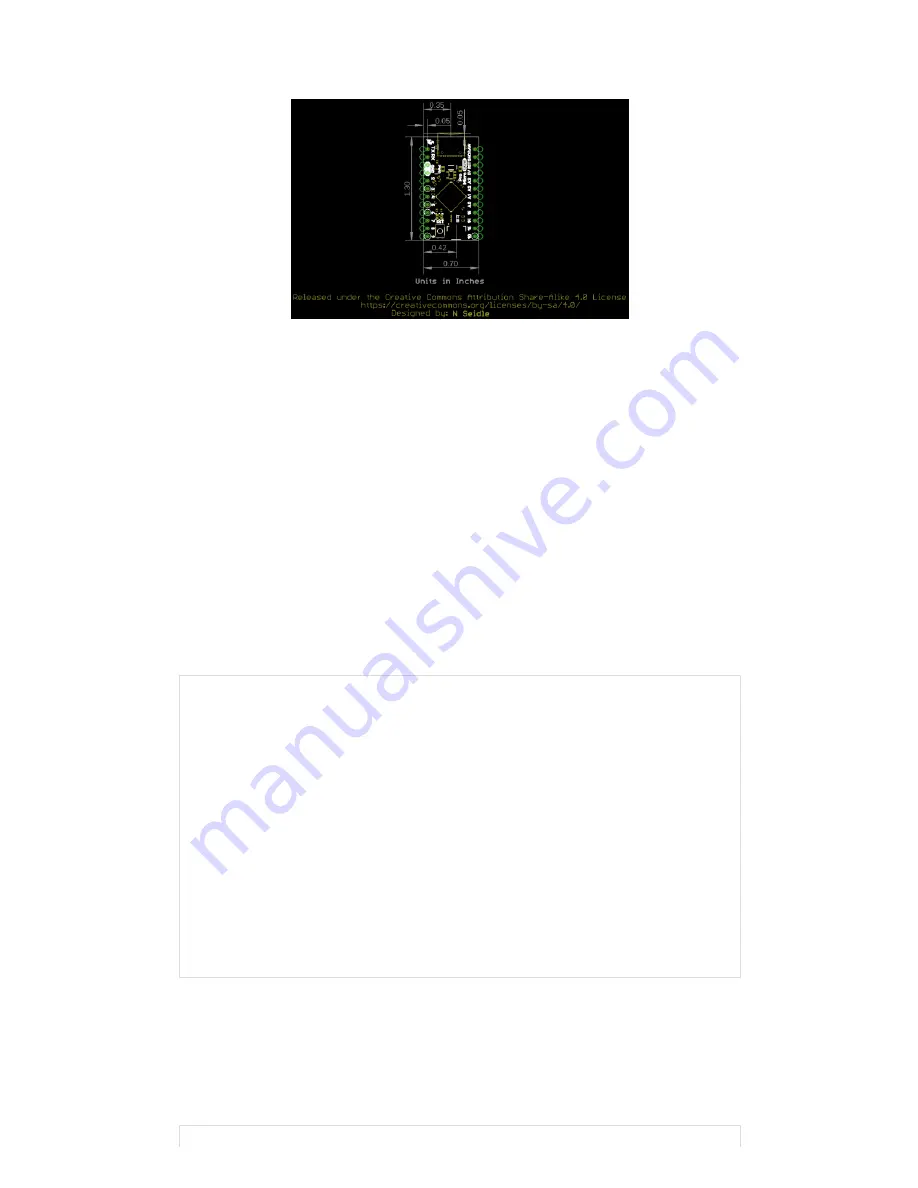
The board measures
1.30" x 0.70"
. Not included in the image below is the PCB thickness, which is
0.8mm
. This is
thinner than a majority of the PCBs used for SparkFun original designs.
How to Power the Qwiic Pro Micro USB C
As the Pro Micro's main feature is its innate USB functionality, the most common way to power it is via
USB
. If the
jumper is set to the default 5V, the Qwiic Pro Micro will be powered directly from the USB bus. If the jumper is set
to 3.3V, the board will regulate the 5V supply coming in from USB down to 3.3V. The other end of the USB cable
can be connected to either a computer, USB hub, USB batteries, or a USB wall adapter, which can (in most cases)
provide more power.
Alternatively, if your Qwiic Pro Micro is living out in the wild, out of reach of USB cables, it can be powered through
either the '
RAW
' or '
5V
' pins. A supply going into those pins will provide power to the Qwiic Pro Micro. To be safe, it
shouldn't be any higher than 6V. If the jumper is set to 3.3V, the voltage will be regulated down to 3.3V.
How, exactly, you power your project is up to you and the demands of your project. If you're making something
battery powered, you could use a LiPo boost converter to power the board at 5V. Or you may want to set the
jumper to 3.3V, which could be powered by a LiPo battery or a couple alkalines. Make sure to check out the
following tutorials for more information.
FEBRUARY 6, 2013
The basics behind the batteries used in portable electronic devices: LiPo, NiMH,
coin cells, and alkaline.










































